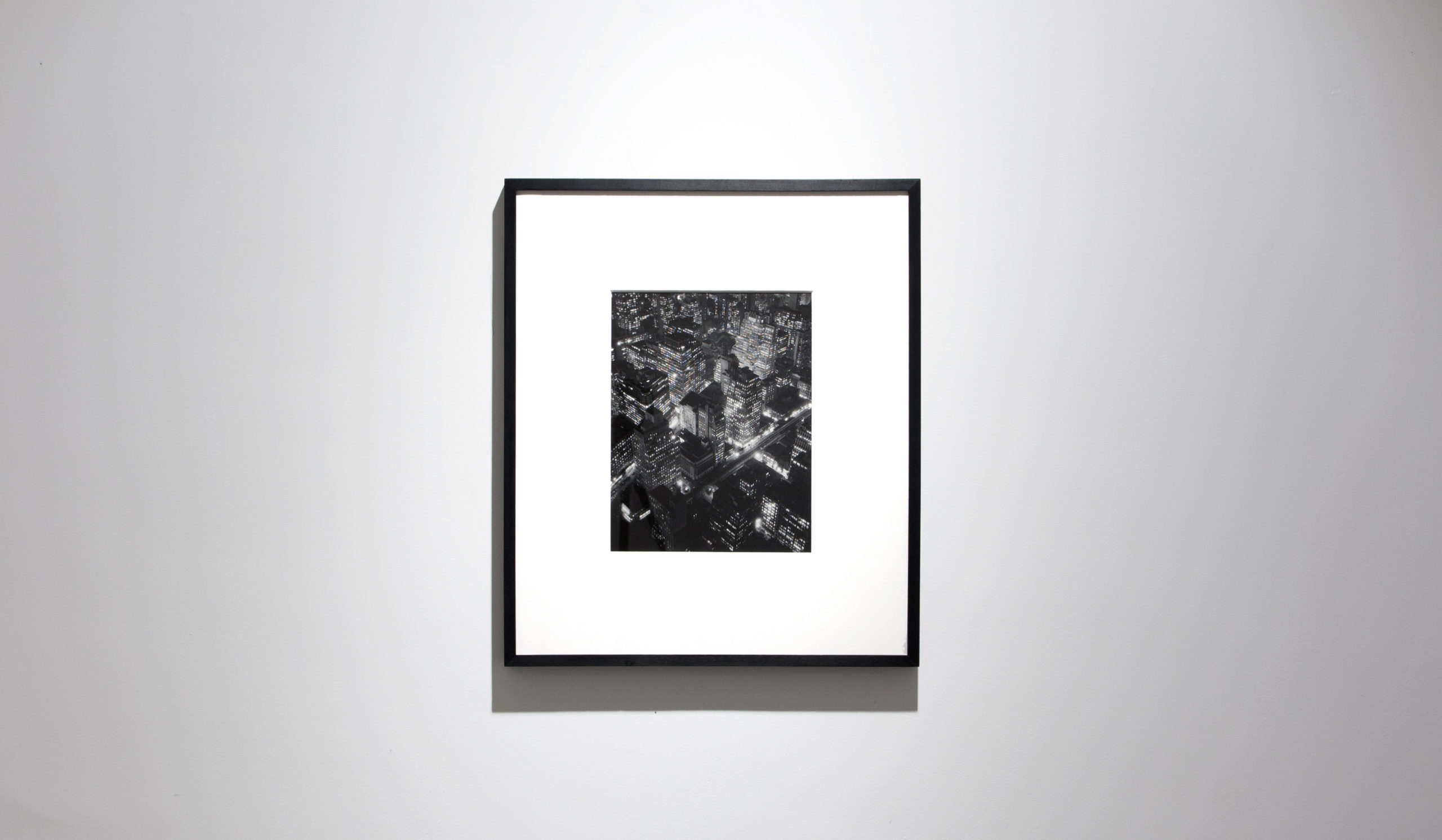Berenice Abbott:A Retrospective
27.10 – 21.11.2015
Closed
Hours
Monday to Saturday, 10:00am – 5:30pm
Gallery
3–5 Swallow St
London
W1B 4DE
During a career spanning the best part of the twentieth century, Berenice Abbott (1898-1991) produced one of the most significant and varied bodies of photography ever made. Although widely regarded as one of the most important American documentary photographers, the exhibition was the first career encompassing retrospective to be mounted in the UK.
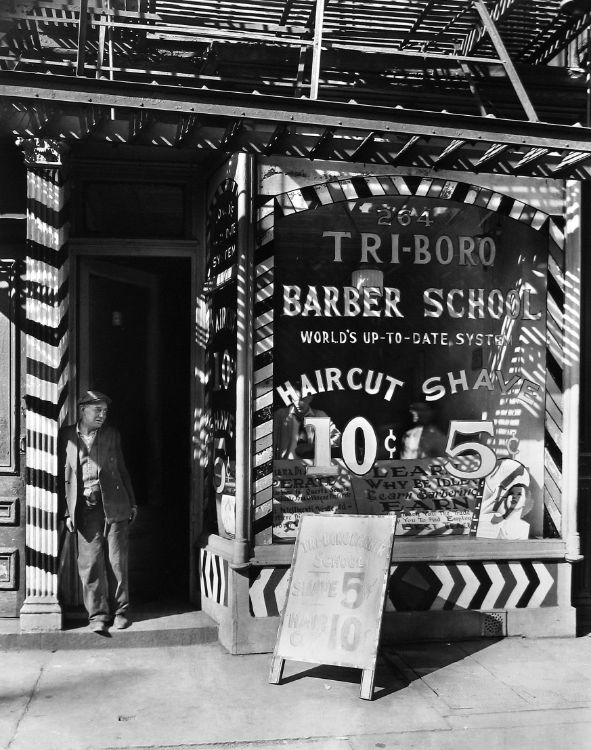
Tri-Boro Barber School, 264 Bowery, 1935
Born in 1898 in Springfield, Ohio, Abbott dropped out of college and moved to New York at the age of nineteen where she befriended poets, artists and anarchists in Greenwich Village. Deciding to become a sculptor, she left for Paris in 1921 where she was charmed by the glamorous avant-garde. Impoverished by her lack of success as a sculptor, she took a job as a darkroom assistant to the acclaimed photographer, Man Ray. Realising her own talent with the camera, she subsequently opened her own studio where artists and writers would come to have portraits taken. The exhibition will include a selection of these early portraits, revealing the influence of Man Ray and the Surrealists. The famous sitters include James Joyce, René Crevel and Eugène Atget.
Returning to New York in 1929 as a successful portrait photographer, Abbott found her home country spiralling into the depths of the Depression. Work for a portrait photographer was short and Abbott saw the photographic potential in the urban sprawl and devoted herself to capturing the ‘fantastic’ contrasts of the rapidly changing city. After several impoverished years and in need of work, the Federal Arts Project, an arm of the New Deal Works Progress Administration tasked with employing millions of unemployed people, employed her to photograph the city.
Becoming known as ‘Changing New York’, Abbott’s project is a colossal testament to the dizzying scale and extreme contrasts of the most advanced metropolis in the world. Abbott conceptualised the project as a photographic ‘portrait’ of the city and worked with the same fastidious documentary precision as her contemporaries, Walker Evans and Dorothea Lange, photographers also employed under the auspices of the New Deal administration.
A selection of science photographs will represent the body of work on which Abbott focused during her later career. Abbott finally received the opportunity to undertake a long-pursued project to photograph scientific experiments when she was employed by a United Stated government programme aiming to improve science education in an effort to keep pace with the Russian space programme which had just launched the first artificial satellite, Sputnik. Whilst aesthetically unique from her earlier work, Abbott’s science work persisted with her belief that photography should always have a purpose and that it should always teach.
The exhibition will also show photographs from Abbott’s lesser-known US Route 1 series. Taken during a road trip through the small towns and holdings down the Eastern seaboard, from Maine to Florida, the photographs are Abbott’s account of the American Scene.
Highlights
5
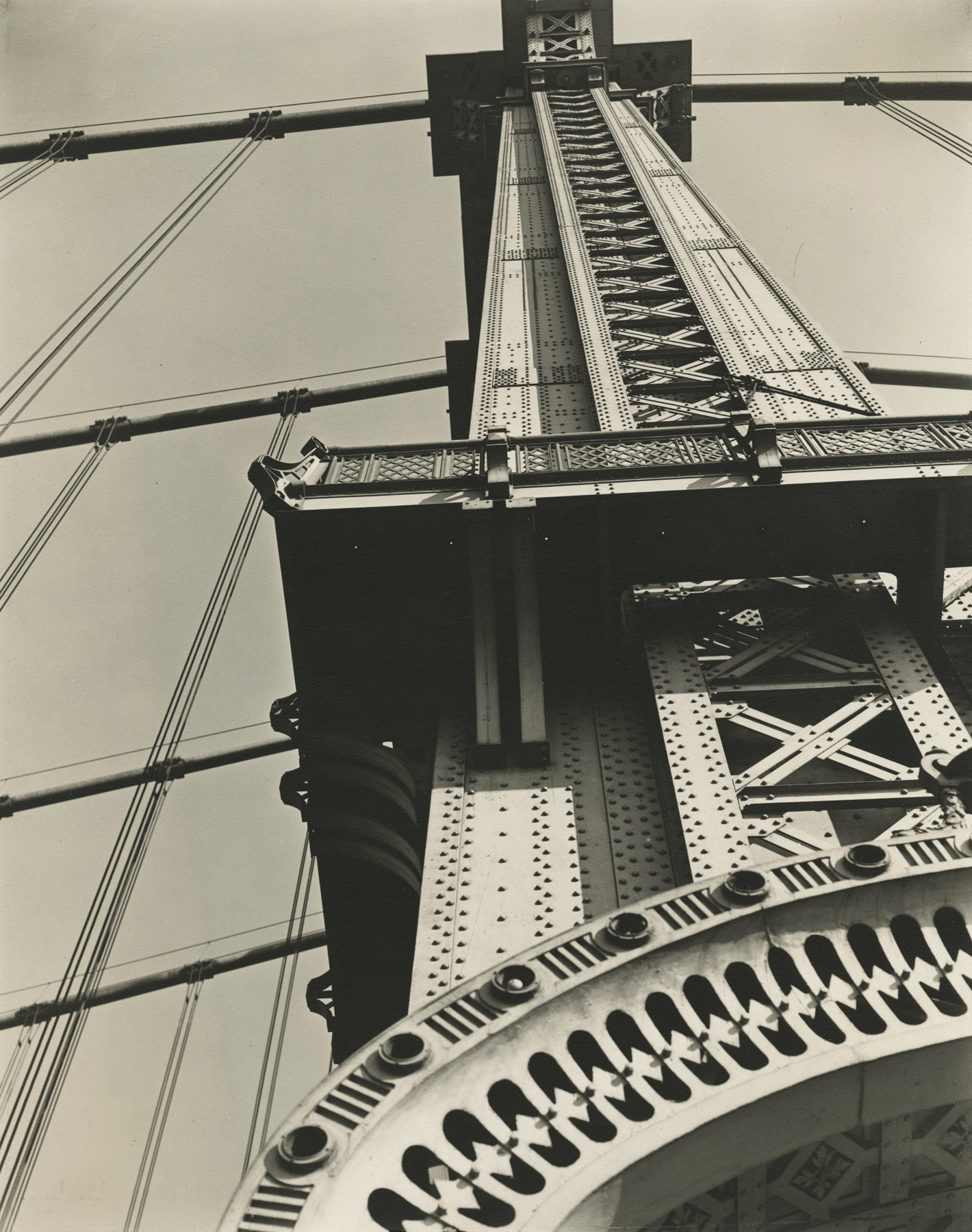
Manhattan Bridge, Looking Up, 1936
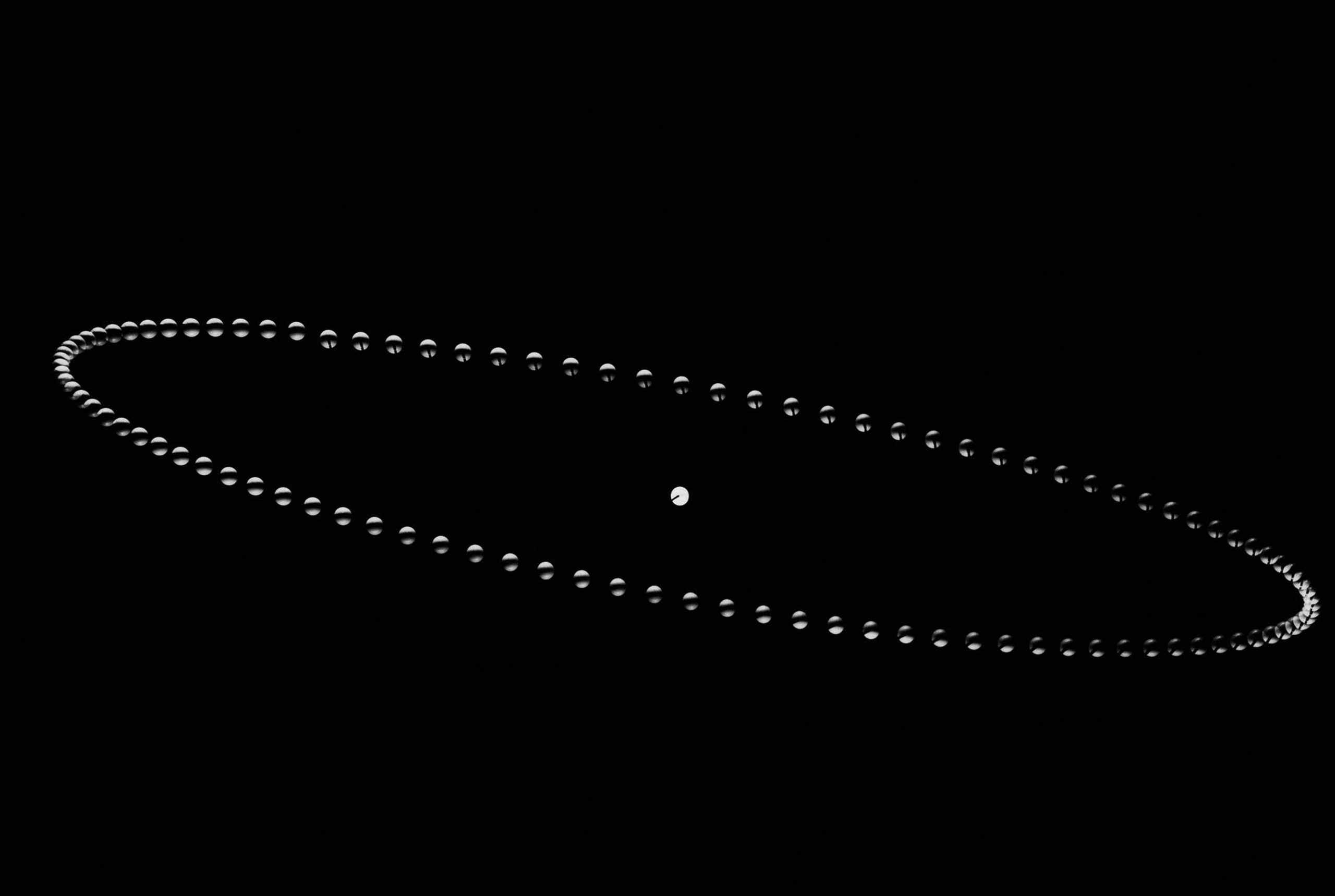
Multiple Exposure Of A Swinging Ball, C. 1958-61
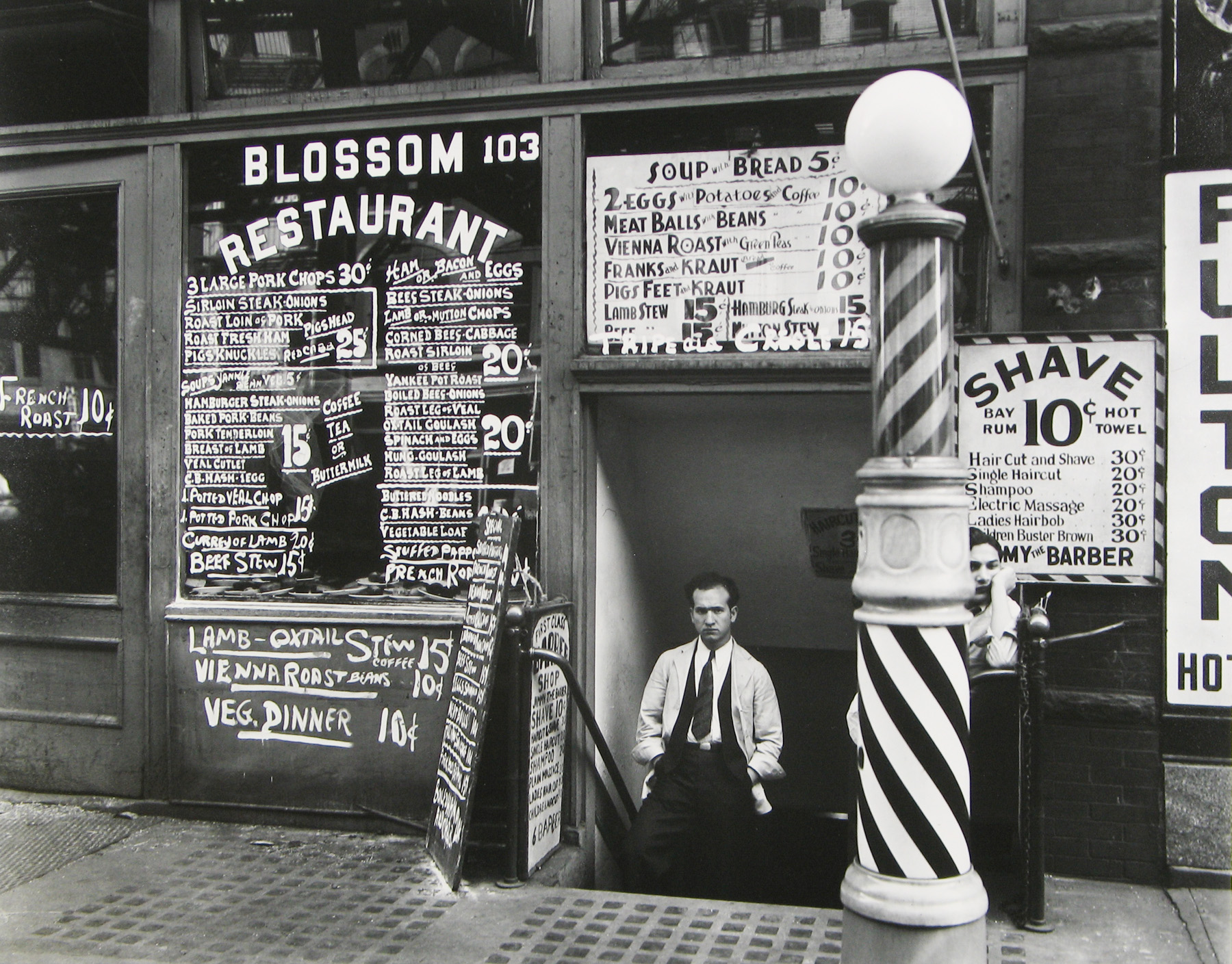
Blossom Restaurant, 103 Bowery, New York, 1935
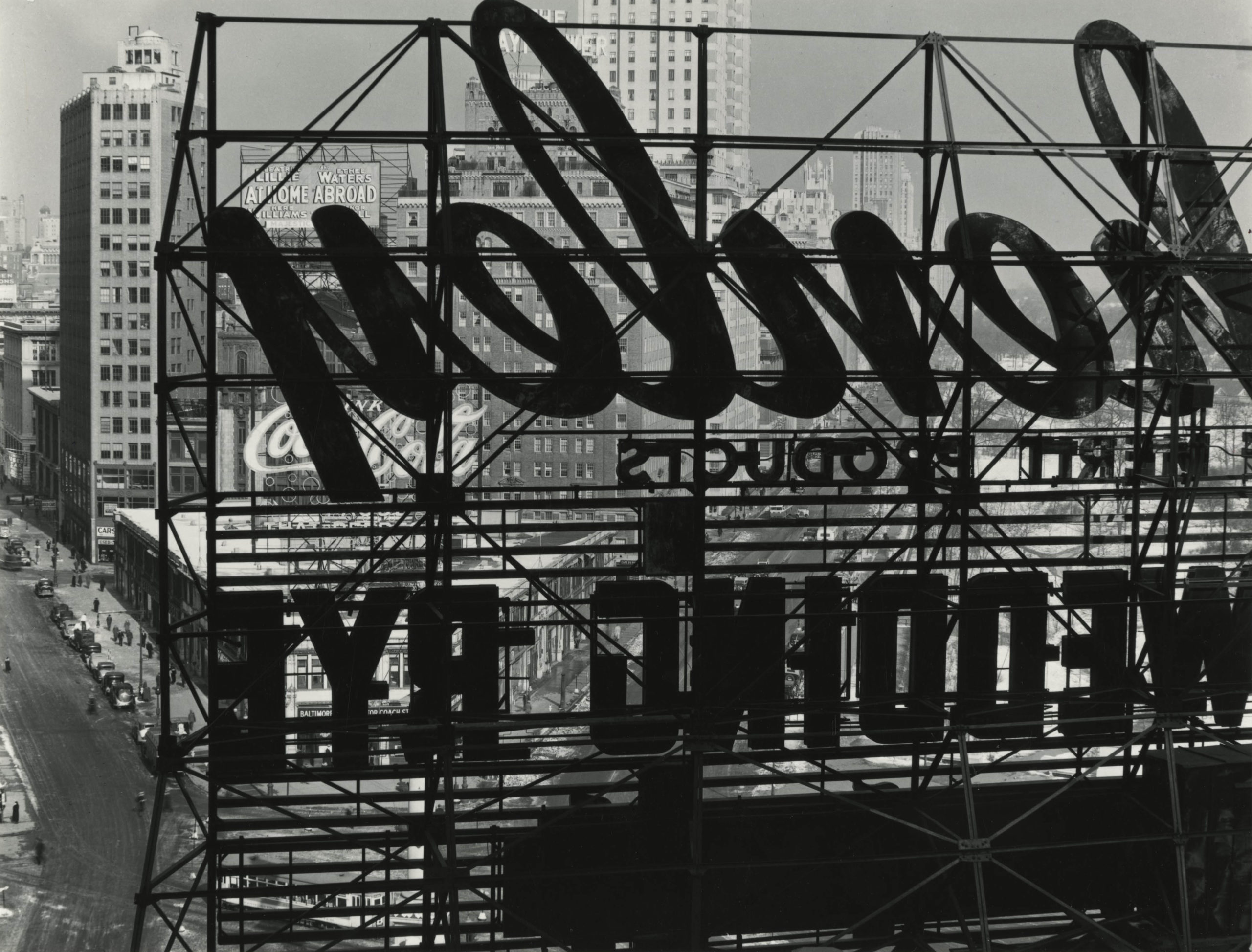
Columbus Circle, 1936
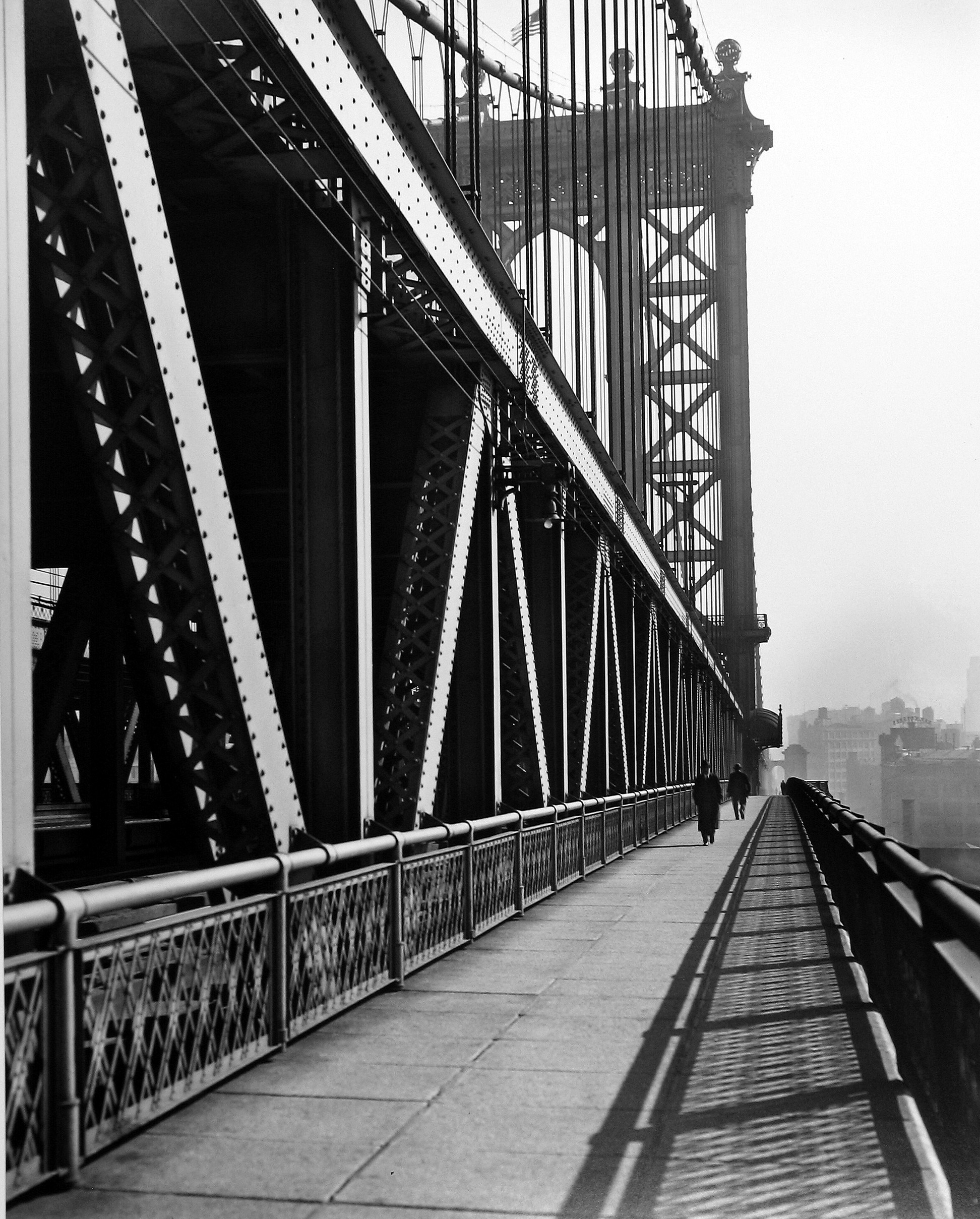
Manhattan Bridge, Lower East Side, New York, 1937
B. UNITED STATES1898-1991
Biography
Across a career spanning the best part of the twentieth century, Berenice Abbott (1898-1991) produced one of the most significant and varied bodies of photography ever made. She is widely regarded as one of the most important American documentary photographers. Having travelled to France in 1921, Abbott was introduced to Man Ray who agreed to employ her as his studio assistant where she quickly picked up how to navigate a darkroom. Swiftly taking to film photography herself, Abbott began taking her own portraits.
Abbotts photographic style grew to be more spontaneous and natural following her move back to New York in 1929, where she began meticulously documenting its streets, buildings, parks and people. The city’s urban sprawl caught hold of Abbott’s imagination and she devoted herself to capturing the “fantastic” contrasts of the rapidly changing city. Rather than glorifying the technological advancement of the city through the depiction of skyscrapers and monumental construction projects, Abbott sought to expose the extreme contrasts of the city and the tensions that had evolved. Her photographs show the nineteenth and twentieth centuries colliding in a dizzying interplay of cultures. The project is a homage to the city and its inhabitants but also a politically-motivated impeachment against the capitalist expansion that endured in New York despite the misery experienced by millions during the Great Depression.
Berenice Abbott was born in Springfield, Ohio, on 17 July 1898. She studied at Ohio State University in Columbus before moving to New York City. Following on from a successful solo exhibition at a Paris gallery, Abbott’s work was exhibited alongside that of Man Ray, André Kertesz and Germaine Krull in The First Independent Photography Exhibition in 1928. In 1935, she won the backing of the Federal Art Project and was able to take on assistants, and she called her project Changing New York. In 1970 the Museum of Modern Art, New York, held an exhibition of her photographs. This was a significant moment for Abbott as the museum’s previous Director of Photography, Edward Steichen, had repeatedly snubbed her, notably by excluding her work from the ground-breaking Family of Man exhibition in 1955. In 1989 a huge exhibition at the New York Public Library celebrated Abbott’s sixty-year career.
